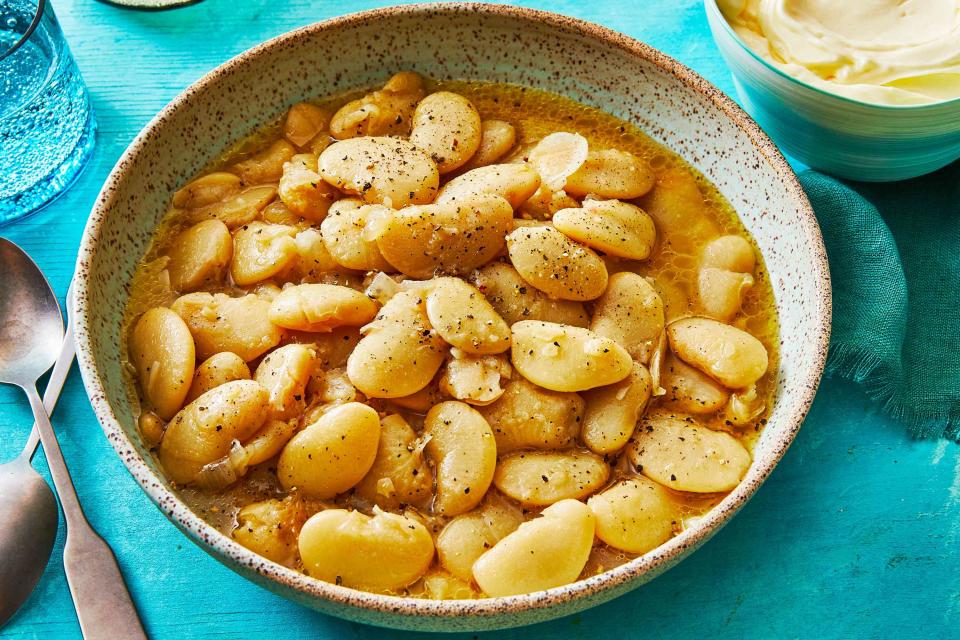Butter Beans Vs. Lima Beans: Is There A Difference?
Are they the same, or do these terms refer to different types of beans?

Caitlin Bensel; Food Styling: Torie Cox
As far as Southern food debates go, the one about whether butter beans and lima beans are the same thing generates only slightly less vehement arguing than whether sugar belongs in cornbread (it doesn’t) or if it’s ever acceptable to use instant custard mix for banana pudding (absolutely not). Yet the bean argument does arise, with people swearing fiercely by their belief, one way or another. You’ll see them labeled in different ways in the store, after all: frozen lima beans, canned butter beans, dried large limas—or is it dried large butter beans?
Turns out, lima beans and butter beans are the same thing. Both terms refer to the same species, Phaseolus lunatus. According to Wheeler Foshee, professor of horticulture at Auburn University, the two terms come down to vernacular differences: “People in the South tend to call them butter beans, especially when they’re fresh.” (Folks are more likely to call them “lima beans” if they’re dried.)
But why two terms for the same bean? Well, lima beans get their name from Peru’s capital city, Lima, where they’ve been grown for more than 9,000 years. While we can’t say with 100 percent certainty how these beans also came to be known as butter beans, we can offer a theory: See, lima beans were often disliked, so some semantics likely came into play to encourage people to eat them. They do have a creamy, buttery texture when they’re cooked, so “butter beans” is a fitting moniker.
Whatever they’re called, and at whatever stage of maturity you find them—dried mature beans, frozen young ones, canned ones of any age—just know that these mild, creamy beans are interchangeable.
:
For more Southern Living news, make sure to sign up for our newsletter!
Read the original article on Southern Living.

